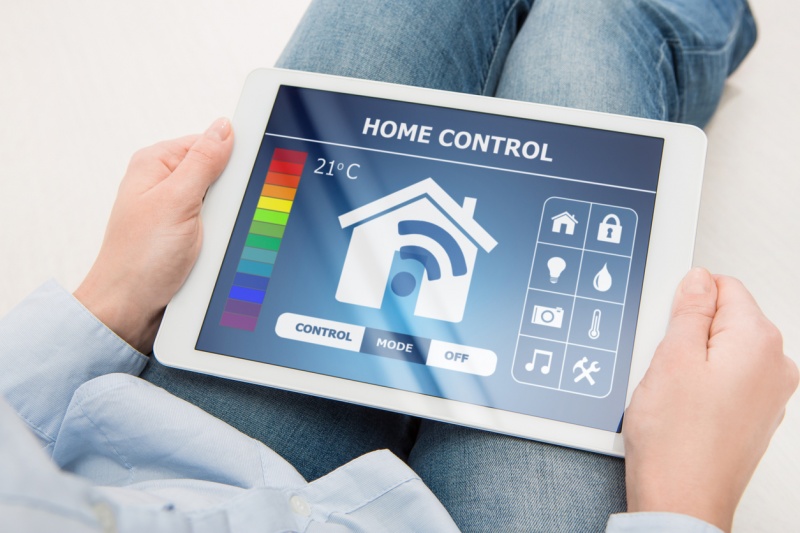
Get Smarter About Smart Homes
The smart home movement is taking homeowners by storm, with an increasing number of gadgets and apps hitting the market to make your life at home more streamlined, efficient, and in many cases, cost-effective.
The technology, however, is outpacing even the savviest among us, leading to a bevy of buzzwords that can make your head spin. Luckily, the National Association of REALTORS®’ Center for REALTOR® Development (CRT) has created a wealth of online resources to help homeowners get a handle on smart home technologies.
Below are just some choice terms from the CRT’s smart home glossary that will elevate your tech IQ in a jiffy:
Bluetooth LE/Bluetooth Smart: This refers to a wireless protocol that is popular among smart home devices. Compared to classic Bluetooth, it is designed to use considerably less power while maintaining a similar range.
Cloud-to-Cloud: Many smart home products use cloud services for their core functionality. Two devices in the same room might not be able to communicate directly. Instead, messages are sent back and forth through their respective cloud services over the internet. A concept known as cloud-to-cloud, it’s becoming a popular way for hardware vendors to increase compatibility.
Geofence: Think of this as a virtual perimeter for the real world. Using your WiFi, Bluetooth or GPS radios, your smart home software can trigger events based on your physical location. For example, you can use a geofence to automatically turn off the lights when you leave for the day.
Hub: The hub is the central device that allows all your different smart home products (lights, locks, thermostats) to work together. Most hubs will also act like a universal remote, as well as providing the tools necessary to automate your devices.
Interoperability: The ability for different smart home devices and services to reliably work together.
IoT (Internet of Things): The Internet of Things is a broad term that refers to everyday devices like lights, thermostats and locks that are able to connect to the internet and to each other. These connected devices can exchange data and work together, automating tasks that used to be manually performed. By 2020, it is predicted that there will be anywhere between 26 billion and 200 billion devices connected to the internet.
Smart Meter: Smart meters are a new generation of electric and gas meters that can digitally (and more accurately) transmit meter readings to your utility. Smart meters can also be paired with monitors or gateways to give consumers a better idea of their own energy usage in real-time.
WiFi: WiFi is the most common protocol used in smart home devices. This is largely because many consumers already have a central hub (their WiFi router) for WiFi enabled devices. WiFi is able to provide high bandwidth for devices that send a lot of data (IP Cameras), but it uses too much power for most battery-powered devices.
Source: Center for REALTOR® Development
If you’d like more homeowner information, please contact me.
The technology, however, is outpacing even the savviest among us, leading to a bevy of buzzwords that can make your head spin. Luckily, the National Association of REALTORS®’ Center for REALTOR® Development (CRT) has created a wealth of online resources to help homeowners get a handle on smart home technologies.
Below are just some choice terms from the CRT’s smart home glossary that will elevate your tech IQ in a jiffy:
Bluetooth LE/Bluetooth Smart: This refers to a wireless protocol that is popular among smart home devices. Compared to classic Bluetooth, it is designed to use considerably less power while maintaining a similar range.
Cloud-to-Cloud: Many smart home products use cloud services for their core functionality. Two devices in the same room might not be able to communicate directly. Instead, messages are sent back and forth through their respective cloud services over the internet. A concept known as cloud-to-cloud, it’s becoming a popular way for hardware vendors to increase compatibility.
Geofence: Think of this as a virtual perimeter for the real world. Using your WiFi, Bluetooth or GPS radios, your smart home software can trigger events based on your physical location. For example, you can use a geofence to automatically turn off the lights when you leave for the day.
Hub: The hub is the central device that allows all your different smart home products (lights, locks, thermostats) to work together. Most hubs will also act like a universal remote, as well as providing the tools necessary to automate your devices.
Interoperability: The ability for different smart home devices and services to reliably work together.
IoT (Internet of Things): The Internet of Things is a broad term that refers to everyday devices like lights, thermostats and locks that are able to connect to the internet and to each other. These connected devices can exchange data and work together, automating tasks that used to be manually performed. By 2020, it is predicted that there will be anywhere between 26 billion and 200 billion devices connected to the internet.
Smart Meter: Smart meters are a new generation of electric and gas meters that can digitally (and more accurately) transmit meter readings to your utility. Smart meters can also be paired with monitors or gateways to give consumers a better idea of their own energy usage in real-time.
WiFi: WiFi is the most common protocol used in smart home devices. This is largely because many consumers already have a central hub (their WiFi router) for WiFi enabled devices. WiFi is able to provide high bandwidth for devices that send a lot of data (IP Cameras), but it uses too much power for most battery-powered devices.
Source: Center for REALTOR® Development
If you’d like more homeowner information, please contact me.